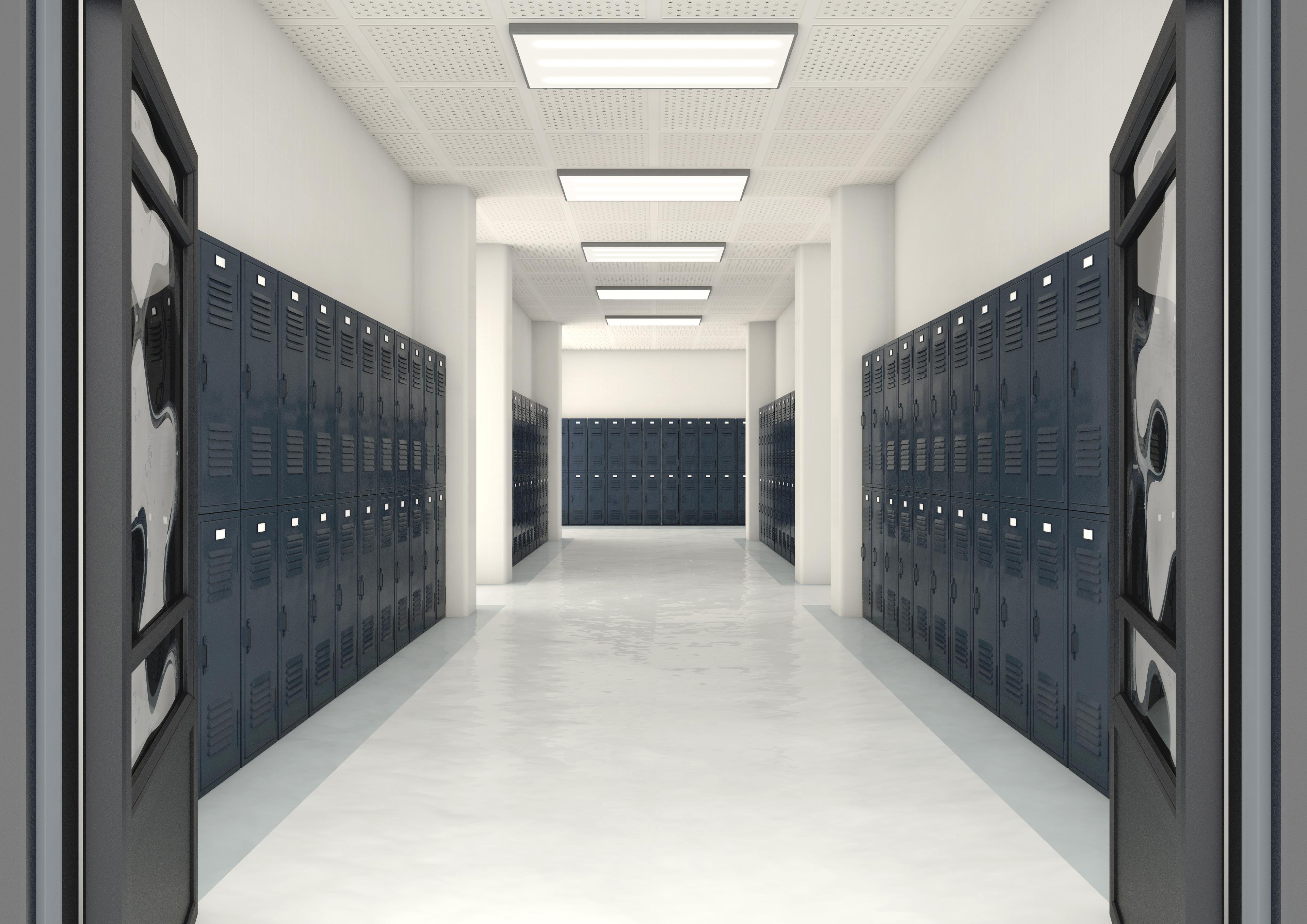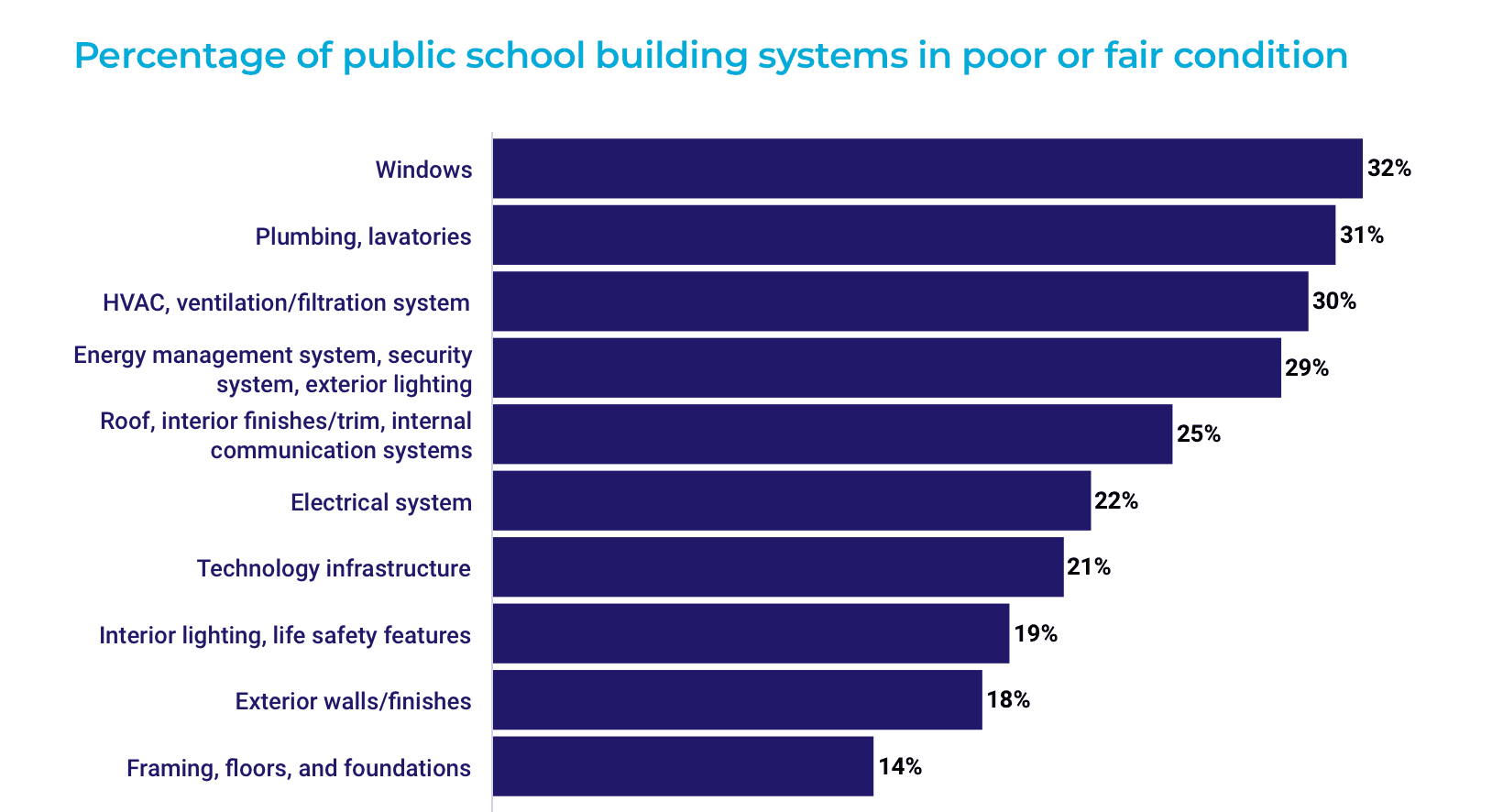November 29, 2023
Janitors Struggle to Keep Up with Deteriorating Schools: Here’s How to Help


Providing school maintenance is an incredibly important job. The health and safety of students and teachers have been linked to the quality of education students receive, and research has shown that school cleanliness and maintenance directly impact learning.
Across the country, janitorial staff struggles to maintain school buildings and to keep up with deteriorating facilities.
The issue is not new, and concerns continue to grow.
A 2019 Washington Post article noted that “According to the National Council on School Facilities, the nation’s PK-12 public school buildings are valued collectively at nearly $2 trillion, and the deferred investment in upkeep is estimated to be between $271 billion and $542 billion.”
That deferred upkeep includes things like improving indoor air quality, upgrading heating and cooling systems (if the building has them), removing asbestos and mold, repairing old pipes that contain lead, and improving drinking water. Not to mention repairing broken windows, doors, and facility structural issues.
On top of that, research suggests that these conditions directly impact a teacher's ability to teach and a student's ability to learn. For example, a study from 2018 “found that in schools without air conditioning, for every one Fahrenheit degree increase in school year temperature, the amount learned that year goes down by 1 percent" (Washington Post).
Another report found that “student achievement was 11% lower in substandard buildings as compared to above-standard buildings.”
Many public schools across the country go without air conditioning due to outdated buildings with no HVAC system or a system in disrepair. This is not a unique issue. In some cases, schools have even shut down due to extremely hot temperatures during the school day.
Unfortunately, school maintenance and janitorial teams cannot keep up with these issues alone and districts are often left to deal with the burden of fixing looming infrastructure issues while facing tight budgets.
Even still, having some workarounds and a plan is necessary to support janitorial staff as much as possible so that teachers and students can make the best of the situation.
Below are three ways to support janitorial staff.

One tip that may help address budgeting issues is taking away the burden of cleaning equipment ownership.
Many public schools have in-house janitorial workers and this means districts take on purchasing and ownership of supplies and equipment too.
Cleaning equipment machines are often expensive to buy and in reality, the total cost of ownership is not part of the discussion or taken into consideration when making the purchase.
Total cost of ownership includes the machine, service trips, repairs and maintenance, batteries, and disposal of the machine. Batteries alone can increase the cost of the machine anywhere from $600--$2000 dollars over the useful life.
One way to augment these unexpected costs is to look for equipment available through a subscription service. This can help alleviate unexpected maintenance, service, and battery costs.
For example, ICE Cobotics' all-inclusive subscription is available on any of their equipment and the service agreement is for 36 months.
The client then pays a set monthly payment for the duration of the subscription which includes service, maintenance, repairs, parts, and consumables. Service for floor cleaning equipment alone, over a 3-5 year period, is typically the same cost as purchasing a machine. So, when considering these costs are included in the subscription, it results in thousands of dollars of savings.
Additionally, with the ICE Cobotics all-inclusive subscription, clients have access to i-SYNERGY fleet management software technology. This provides users with valuable cleaning data that can support them in streamlining processes, measuring performance, and confirming cleaning is done. This can help janitorial teams save time so they can focus on other critical tasks.
Training and support can go a long way and this can begin with an accurate job description.
According to research, job descriptions for janitorial staff are either non-existent or do not accurately describe the scope of work.
This brings about important issues to address when describing the scope of work.
1—not accurately depicting the job means that there is not a clear understanding of all the work that goes into maintaining a school, thus, there cannot be accurate plans without a comprehensive understanding of the scope of work.
2—this can lead to turnover and absenteeism. In an industry that already faces shortages, and one where the value of the work is often undermined, not being transparent from the get-go can lead to higher turnover and cleaning left undone.
You can begin supporting your staff by acknowledging the amount of work they are responsible for and by accurately depicting the job. From there building out a plan for how to appropriately address the work feels more realistic.
On top of that, work to secure funds for training. This may seem counterintuitive especially when funds are in short supply, but training your staff can actually lead to better cleaning results and a staff that feels empowered and knowledgeable—resulting in higher job satisfaction.
According to ManageMen, a custodial training company:
“Too often, we put a vacuum or mop in a janitor’s hand and tell them to clean, assuming they know what to do… but they often don’t. By allocating funds for cleaning programs, products and training, school custodians can have the tools they need to clean properly, while also understanding the basic science of their job, including microbiology, how to prevent cross-contamination, etc.”
Making sure your staff understands the seriousness and importance of their work starts with proper and ongoing training and can have an overall positive impact on not only the school building's health but more importantly on the health of children and teachers.
According to EducationWeek.org “40% of schools don't have a facilities plan for long-term maintenance and upgrades.”
Long-term maintenance and upgrade plans can help ensure a school stays in the best condition possible and can promote a better learning environment. Without a plan, capital that should be put towards building maintenance can easily be spent on other things and this can have devastating results in the future.
According to American School & University:
Having a detailed plan can help janitors prioritize and focus on what is the most pressing issue in addition to their daily cleaning and maintenance. It can also lead to more organized processes, a greater awareness of looming issues, and the ability to address these issues in an effective manner.
While there are many reasons for the deteriorating conditions at schools across the globe one thing is clear, cleaning and building maintenance are incredibly important to the health and safety of the students, teachers, and staff that work and learn in those buildings.
For more information on how a cleaning equipment subscription can help your school facility, contact our subscription experts.
*The original publication date for this post was September 6, 2021. This blog has been updated since.
Ready to Explore Automation? Talk to an Automation Expert